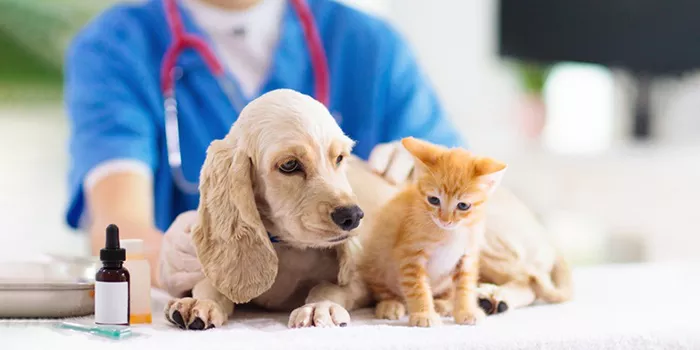Pet insurance provides peace of mind by covering veterinary costs for unexpected accidents and illnesses. Choosing a comprehensive pet insurance policy involves understanding coverage details, comparing plans, analyzing costs, and considering customer experiences. This article explores what comprehensive pet insurance typically covers, compares different plans, discusses pricing factors, outlines exclusions, and includes insights from customer reviews and industry experts.
Coverage Details
Comprehensive pet insurance typically covers the following:
Accidents: Treatment for injuries resulting from accidents, such as broken bones or ingestion of foreign objects.
Illnesses: Medical care for illnesses, including infections, digestive disorders, and chronic conditions like diabetes.
Hereditary Conditions: Coverage for hereditary and congenital conditions that may affect certain breeds.
Routine Care: Some plans include coverage for routine care like vaccinations, annual check-ups, and preventive treatments.
Comparison of Plans
When comparing pet insurance plans, consider the following factors:
Coverage Limits: Maximum amount the insurer will pay per incident, year, or over the lifetime of the pet.
Deductibles: Amount you pay out of pocket before insurance coverage kicks in.
Reimbursement Percentage: Percentage of covered expenses reimbursed by the insurer (e.g., 70%, 80%, 90%).
Coverage Options: Differences in coverage for accidents, illnesses, hereditary conditions, and routine care.
Cost Analysis
Pet insurance premiums vary based on several factors:
Pet’s Age and Breed: Older pets and certain breeds may have higher premiums due to increased risk.
Location: Cost of veterinary care varies by region, influencing premiums.
Coverage Level: More comprehensive coverage with higher limits and lower deductibles generally results in higher premiums.
Exclusions and Limitations
Exclusions and limitations can include:
Pre-Existing Conditions: Health issues diagnosed before the policy’s start date are typically not covered.
Certain Treatments: Some plans exclude specific treatments or elective procedures.
Waiting Periods: Time between policy enrollment and when coverage begins for certain conditions.
See Also: What Does Flood Insurance Cover In A Condo
Customer Reviews and Ratings
Customer reviews provide valuable insights into:
Claims Experience: Ease of filing claims and satisfaction with reimbursement process.
Customer Service: Responsiveness and helpfulness of insurer’s customer service.
Coverage Satisfaction: Whether the coverage met expectations during unexpected events.
Claims Process
The claims process typically involves:
Submitting Documentation: Providing invoices, veterinary records, and receipts for treatment.
Claim Approval: Insurer reviews the claim and determines eligibility for reimbursement.
Reimbursement Timeline: Timeframe for receiving reimbursement after a claim is approved.
Company Reputation
Consider the reputation of insurers based on:
Financial Stability: Ability to pay claims over the long term.
Customer Service Records: Reputation for handling claims fairly and efficiently.
Industry Ratings: Ratings from independent agencies evaluating insurers’ performance.
Additional Benefits
Some insurers offer:
Wellness Coverage: Includes preventive care like vaccinations and dental cleanings.
Dental Coverage: Treatment for dental diseases and injuries.
Prescription Medications: Coverage for medications prescribed by a veterinarian.
Policy Customization
Options for customization include:
Coverage Levels: Choosing higher limits or adding specific coverage options.
Deductibles and Reimbursement Rates: Adjusting deductible amounts and reimbursement percentages.
Add-Ons and Riders: Adding coverage for alternative therapies or boarding fees.
Expert Recommendations
Veterinarians recommend pet insurance policies that:
Provide Comprehensive Coverage: Cover accidents, illnesses, and chronic conditions common to your pet’s breed.
Offer Transparent Terms: Clearly outline coverage limits, exclusions, and claims processes.
Conclusion
Selecting the most comprehensive pet insurance involves researching coverage options, understanding costs, and considering customer feedback and expert recommendations. By evaluating coverage details, comparing plans, and reviewing customer experiences, pet owners can find insurance that provides financial protection and peace of mind for their beloved pets’ health care needs. Always consult with veterinarians and insurance professionals to tailor coverage to your pet’s specific needs and circumstances.
[inline_related_posts title=”You Might Be Interested In” title_align=”left” style=”list” number=”6″ align=”none” ids=”2428,2369,2226″ by=”categories” orderby=”rand” order=”DESC” hide_thumb=”no” thumb_right=”no” views=”no” date=”yes” grid_columns=”2″ post_type=”” tax=””]





















